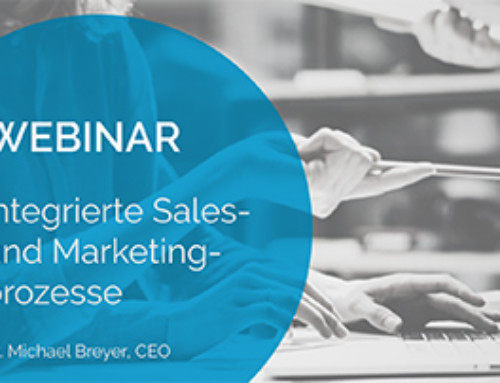Longtime friends Evan Baehr and Evan Loomis are the kind of entrepreneurs who learn lessons not only by doing things themselves, but also by studying others.
Baehr is a co-founder at Able, an online lender to small businesses. Previously he was a co-founder of Outbox, a consumer internet company backed by venture capitalists Peter Thiel and Mike Maples. Loomis is co-founder of TreeHouse, a sustainable home-improvement store. In these and other ventures, the tandem have raised more than $50 million and survived the stress of multiple rounds of investor presentations.
All of which would qualify them to write a book like the one they just released: Get Backed: Craft Your Story, Build the Perfect Pitch Deck, and Launch the Venture of Your Dreams, from Harvard Business Review Press. But on top of their own fundraising experiences, the co-authors researched how others did it. Their book includes actual pitch decks from 13 companies who raised more than $150 million combined.
Based on all they learned, Baehr and Loomis devoted a chapter to crafting the perfect pitch deck. Here are their 10 „building block“ slides.
1. Overview. This should include your elevator pitch, describing the problem your startup will solve. It should be easy to understand what your company does.
2. Opportunity. Describe your industry–and your startup’s niche within it. Demonstrate that your market has explosive growth potential–and that your offering is differentiated from everyone else’s.
3. Problem. Dive deeply into the problem you’re solving–why it exists, why it’s emotionally painful, and how many people experience it. That last piece will help you explain why any company with an ability to solve the problem is a smart investment.
4. Solution. Now that your audience sees there’s a problem, show how you’d solve it. You might veer away from your slideshow to show a video or a software demo. If your solution involves a physical prototype, you might pause to explain key features.
5. Traction. Investors don’t want to feel as if the venture needs them. If you can demonstrate traction–growth in sales or users–your audience is more likely to believe in your future success, with or without their help.
Surveys aren’t good enough. To illustrate why, Baehr tells a story from his time at Outbox. The idea behind Outbox was saving customers the time of going through their mail; instead, they could see digitized versions of their mail on their phones. When Outbox asked potential customers about the idea, they wanted to know when and where they could sign up.
„We thought it was a sign of demand,“ says Baehr. But when people landed on Outbox’s signup page, they hesitated. Suddenly they realized there were privacy concerns about having their medical results digitized and stored on a server.
Instead of surveys, use data that’s more tangible. Nothing beats actual sales. But if you’re pre-revenue, you can conduct an AdWords experiment, driving potential customers to a landing page, where they can provide their email addresses. From this, you’ll get data that paints an early picture of your customer acquisition costs and conversion rates.
6. Customer. Include a statement like: „We target the eight million professional service providers in the U.S.“ You are describing your customer and your market.
What a VC wants to see, say the authors, is a credible claim that you can build a billion-dollar company. The right way to do this is to calculate your total addressable market (TAM). First, figure out how many people could possibly buy your product. Next, figure out how much revenue you’d make from each one. Multiply those two numbers, and you have your TAM.
Next, calculate your served addressable market (SAM). Whereas TAM provides the macro view, your SAM is a reasonable subdivision of it, filtered by region or demographic. Together, the TAM and SAM will show you’re playing in a large enough market–and have a plan to grab a piece of it.
7. Competition. This is not the time to get drunk on the uniqueness of your own solution. Show the investors how your customers are currently handling the problem you aim to solve. Whatever they’re doing is your competition. Ideally, you’ll map how alternative solutions compare with yours in realms like price, region, access, speed, and quality.
8. Business model. Detail your cost of customer acquisition. Show that you’ll be able to acquire customers for less than one-third of their lifetime value. (For further reading on that ratio, the authors suggest VC David Skok’s seminal blog about key metrics for software-as-a-service startups.)
In addition, you’ll need to make projections about your cash flow, burn rate, and break-even point–and how any of these could change based on pricing decisions and your success or lack in growing revenues.
9. Team. Who’s going to pull this off? Provide brief bios. Paint a picture of expertise as quickly as possible.
10. Use of funds. How much do you want and what will you do with it? The slide might say: „We’re raising a $5M Series A with three goals,“ and then list those goals: Scaling the inside sales team, optimizing the platform for ROI, and generating leads through content and partnerships. Don’t worry about whether you’re asking for the right amount. The most important thing is clarity about how you’ll reach profitability or your next funding round.
In addition to the 10 building blocks and cover, the authors suggest preparing extra slides, just in case you pique investor interest about particular details. Extra slides might pertain to your patents, your branding, your supply chain, or your exit strategy, and include detailed team bios.
Above all else, the authors suggest staying flexible in your approach–and not locking yourself into the same pitch deck. Early on, you’ll likely find that you’re getting the same questions from investors, over and over again. „It’s a good indicator that the slides you’re using to tell your story are not complete,“ says Loomis. „The deck should be constantly changing, based on the feedback you get.“








